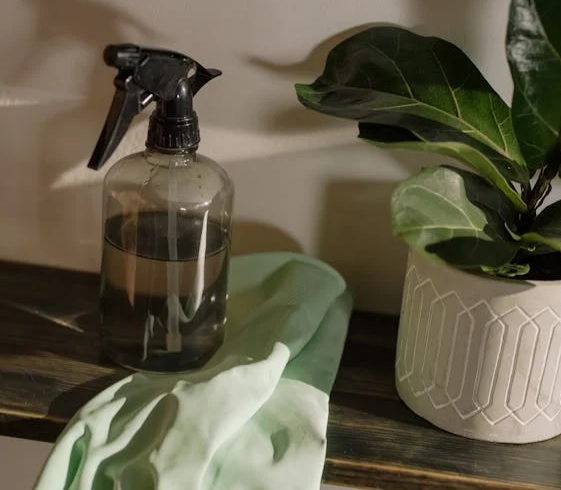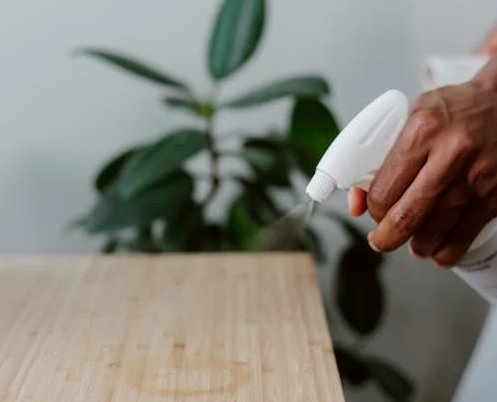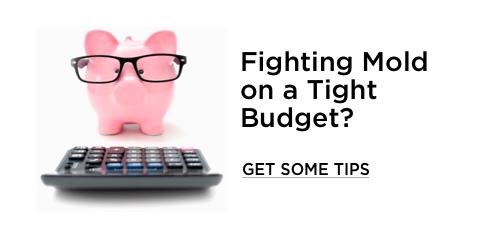Managing Mold Symptoms
Mar 28th 2024
Mold is often believed to be largely harmless, with reactions for the most part limited to sneezing, coughing, nasal congestion, and sometimes difficulty in breathing. However, exposure to toxic, mycotoxin-producing molds in indoor environments is now known to cause some severe health symptoms, ranging from chronic sinusitis, skin rashes, neurological symptoms, fungal infections, gut dysbiosis, autoimmunity, and disease. If you are also allergic to mold, your symptoms could become more serious and could even result in serious respiratory problems and mast cell activation syndrome or MCAS.
The good news is that it is possible to protect yourself and your family from mold growth caused by water damage which tends to be the most problematic to human health. Thus, even though there are thousands of mold species, and they all are naturally present in any environment, you CAN live safely and without fear of getting sick.
The Risk Factors
Just like any illness, there are risk factors involved when it comes to mold. One of the most common is having a personal history of allergic reactions to dust, which might not be dust at all, but mold. It can also be a genetic predisposition to not being able to detoxify biotoxins as well as other people.If you have chronic sinus infections or nasal congestion, or even asthma your risk of being negatively impacted by mold exposure is heightened. Additionally, when you are exposed to mold for a long period of time, it is more likely that you will develop symptoms, because high levels of mold impact and eventually suppress the immune system.
Mold allergy is also quite common; about one in five people in the United States have been diagnosed with mold or environmental allergies.
This means that if you cough or sneeze or experience nasal congestion when exposed to dust or an area with a musty smell, it is most likely an environmental allergy, like mold allergy. Also, if you have been suffering from asthma or respiratory issues, it can be a sign of an allergy.
Here are some of the most common symptoms of a traditional mold allergy:
- Runny nose or nasal congestion
- Wheezing or breathlessness
- Itchy eyes and/or throat
- Coughing
- Sneezing
- Headaches
- Skin rash or dry skin
- Flu or fever
- Malaise

Prevention is Key
One way you can protect yourself against mold is to prevent a mold infestation in your environment. This means you have to enact strategies that will prevent mold growth or make the environment less hospitable for mold to proliferate
There are mold spores present in the air, and they can settle on surfaces of furniture, clothing, and even hair. There are even different types of mold in food, and these include mushrooms, cheese, some fermented foods, wine and any type of food that contains vinegar. Given the right conditions, any ambient mold can find a place inside your home to take hold and become problematic.
Regular Cleaning
It is a good idea to clean your house regularly to prevent mold spores from settling into surfaces where they might thrive. Places to concentrate your cleaning efforts include bathrooms, kitchens, basements, attics, and any room where humidity may be high.
These places have high concentration of moisture, and sometimes they can be warm or have the ideal temperature for mold spores to grow. It’s best to clean them regularly, keep them as dry and dehumidified as possible and use a mold treatment spray designed to address spores and mycotoxins.
Mold treatment sprays are usually designed to treat mold, mildew, and bacterial contamination on any surface. They are best applied on the areas where mold is likely to grow, making it easier to clean and also prevent future infestations.
In particular, EC3 mold treatment sprays are made from natural, botanical ingredients that are proven to address mold and mycotoxins. The sprays are nontoxic and can be used around children and pets. And if you have a mold allergy or have sinus issues, EC3 products were specially developed or those suffering from chronic mold-related illnesses.
Proper Ventilation
Another way to prevent mold infestations is to properly ventilate your home. Air must circulate in a house, so that all the dust particles and mold spores present in the air do not settle into the surface areas of a house.
Since mold spores are present in the environment, they can be carried inside your home by anyone: pets, visitors, you and your family too. Once these dust particles and mold spores are inside, they can float in the air, and without proper ventilation or air circulation, will settle slowly on any surface.
To optimize air circulation in your home, open doors and windows and allow fresh air and sunlight in. If you have rooms that do not have windows, use fans to help the air circulate so that the dust particles and all other things present in your indoor air are carried out through the air and filtered out of your home.
Also, if you have an HVAC system, it’s best to have the systems cleaned regularly and the filters should be changed even 4 months. Properly designed filters can prevent mold from entering your home, but if you do not clean or replace them regularly they can instead carry more mold in your indoor air.

Take Supplements
Another way to manage your susceptibility to mold illness and symptoms caused by mold is to take targeted, professional-grade supplements. There are supplements to aid with detoxification and histamine relief, which can improve the reactions of those who are prone to sickness and seasonal allergies.
The right supplements can strengthen your immune response and can make nasal and sinus passages healthier and more robust when it comes to irritation and exposure to specific allergens.
Make Your Health a Priority
Making your health a priority might sound easy, but it needs a strategy when you have an increased risk for allergies and possible mold exposure that could lead to a serious illness. And making it a priority also means living in a house that is protected from allergens, such as dust and mold.
You have to make sure that your home is properly ventilated, and any water damage is dealt with immediately to prevent mold from growing. And once it starts to create colonies, it’s best to use mold-focused cleaning products from Micro Balance Health Products to ensure that it won’t spread or grow again.



